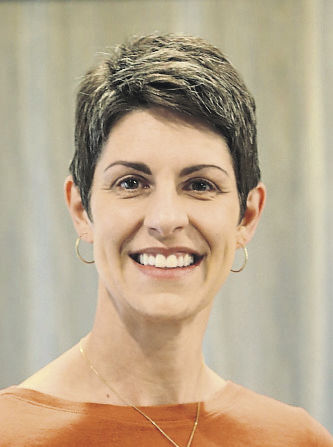My guess is, many of you finally are getting back into a work routine.
This might be transitioning back to the office or making work-from-home permanent.
Here are some things to think about that will ultimately improve your productivity.
In the office
What is your current set up? Are you stationed in a office or a cubicle?
Either setup, it’s ideal to have an organized, inviting space. Inviting means when someone drops by unannounced with a question or to attend a scheduled meeting, it’s essential to have a designated spot for them to sit down, set their laptop or take written notes.
If you’re like me, I have a talent of forgetting something discussed within 30 seconds unless I’ve documented notes from our conversation. My organizational success stems from making lists and prioritizing tasks after the fact.
Establishing a “designated spot” for others is a great start to transforming your workspace.
• Offices are typically designed to accommodate a chair or two. Do you have existing furniture? Are the chair(s) occupied with “stuff?”
• If you are stationed at a cubicle, is there a spare chair nearby? If not, take inventory of any open wall space where a community chair could reside.
Now that we have your “spare chair” addressed, lets think about that valuable desktop space.
I’ve witnessed many “styles” of organizing in my day. From the organized chaos (I know where everything is and it completely consumes my desk) to those who have a designated place for their papers, supplies and equipment while maintaining available surface space.
I function best when I’ve established a home for everything.
To create your system, first you’ll need to evaluate the stuff you have.
While considering your stuff, don’t forget to factor in contribution from your co-workers. This always ranges from low- to high-priority items. Not being present when they stop by can create problems, for sure.
The majority of people have a general “inbox” situation, either on the desk or hanging somewhere. This “system” is the quickest way to set yourself up for failure.
It’s happened more then once in the history of business — you leave your desk for a few minutes, someone — if not multiple people — stop by, and tend to place things in the midst of your current piles.
Long story short, a check that needed to be deposited ASAP was set on my desk, then covered by a report that was dropped off right after. At glance, I saw the report and knew it was not a priority to address.
Needless to say, I missed the covered check and it did not hit the bank.
Lesson learned. I created clearly labeled, Categorized Inboxes. I alerted everyone I interacted with on a regular basis of where I would like them to place their repeat items. This was 100% successful. I never missed another deposit deadline. If anything, it made me more efficient.
Anytime I stepped away, upon return, my eyes immediately went to the “Check Tray Inbox” and I quickly created my daily deposit slip.
This was ultimately a huge time saver. I modified my approach and periodically added additional check information as they came in. Not only did I create a quick and efficient process, I also improved my time-management skills.
This is just one example of understanding the paper flow at your desk. Creating a home for your documents and action items, will improve the random piles taking up prime desktop real estate.
At home
The advantage of working from home is you do not need to accommodate people coming into your space. The disadvantage, you need to create a space to accommodate you.
Many do not have a designated office in their home and find themselves working from a kitchen table.
I can relate 100%. For the past 20 years, I’ve worked in an office that provided the majority of things needed. Recently, I launched my business and began working from my kitchen table, as well.
I knew this was not a long-term option, so I had to get creative.
I converted a spare bedroom walk-in closet into my office. It’s a 7-foot-by-8-foot room, with a window to clearly see what’s happening in my neighborhood. While staying productive, I have the opportunity to take a mental break periodically.
I customized this space with a small writing desk, a spot for my new comfy chair, (don’t get me started on the delivery timeline), large cabinets that serve as additional desktop/storage, some nice decor. Most important, it’s quiet.
My point is, everyone can get creative when customizing their work space. By taking inventory of what you already have, you could probably repurpose things to accommodate your daily workspace needs.


